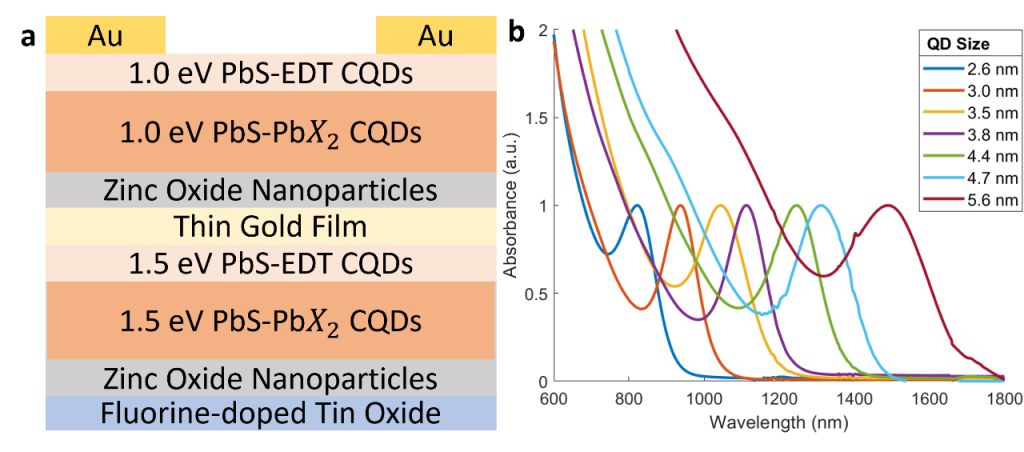Optimizing Colloidal Quantum Dot Synthesis Conditions for Tandem CQD Solar Cells
Program:
Electrical and Computer Engineering
Project Description:
Tandem solar cells are of interest as a route to improve efficiencies beyond the limitations of current single junction cells (such as silicon solar cells). Fabricating a tandem solar cell requires introducing a new semiconductor material with a different bandgap, which will absorb a different portion of the sun’s spectrum. In this poster, we synthesize lead sulfide colloidal quantum dots (PbS CQDs) of different bandgaps and explore their applications in tandem solar cells.
Team Members
-
[foreach 357]
-
[if 397 not_equal=””][/if 397][395]
[/foreach 357]
Project Mentors, Sponsors, and Partners
-
Dhanvini Gudi
Course Faculty
-
[foreach 429]
-
[if 433 not_equal=””][/if 433][431]
[/foreach 429]
